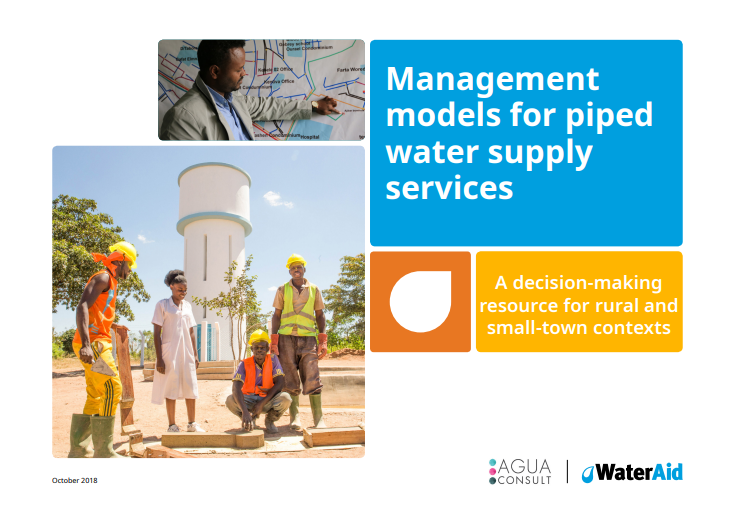WaterAid publishes new resource guide.
Published on: 22/01/2019

The world's largest NGO for water and sanitation, WaterAid, commissioned Aguaconsult to help research and co-develop a new resource for selecting management models for piped water supply schemes.
In 2015 governments committed to Sustainable Development Goal 6.1: universal and equitable access to safe and affordable drinking water for all by 2030. But rural communities have traditionally suffered from lack of access to essential services such as water and sanitation, in comparison to urban populations. SDG 6 means closing that gap, but also improving the quality, and reliability of services. The ultimate goal – sustainable water in every household – can normally better be achieved via piped networks. Conventional management models have largely been based on voluntary Community-Based Management (CBM) relying on communities taking on the burden of maintenance themselves, with limited – if any – support from external agencies or local government. By and large this CBM model has struggled to ensure that rural water supply infrastructure is adequately managed and maintained, with ‘fix-on-failure’ becoming the default approach in far too many cases. There are increasing examples of other management options emerging, including the aggregation of a larger number of schemes under one umbrella contract, maintenance fees for a guaranteed service, and private or public utilities taking on responsibility for scheme management, together with incentives from governments in some cases.
This resource, written by Aguaconsult and WaterAid, has been developed primarily for WaterAid staff and partners to help in the selection of the most appropriate management models for piped water supply systems in rural and small-town contexts. The guide is also being made available as an external resource for other organisations, including national governments and development partners; a related set of decision-making posters will be released soon. By considering a range of contextual factors, including population densities, availability of skilled technicians and spare parts, commercial viability of markets, the degree of private sector participation and other issues, the resource walks the user through a number of decision-making steps – one of the most important principles is to align with, and support, government-sanctioned models or pilots and to ensure pro-poor inclusive services for all.
This blog was originally published on the Aguaconsult website on 6 November 2018.
"Management models for piped water supply services : a decision-making resource for rural and small-town contexts" can be downloaded below under Resources.
At IRC we have strong opinions and we value honest and frank discussion, so you won't be surprised to hear that not all the opinions on this site represent our official policy.